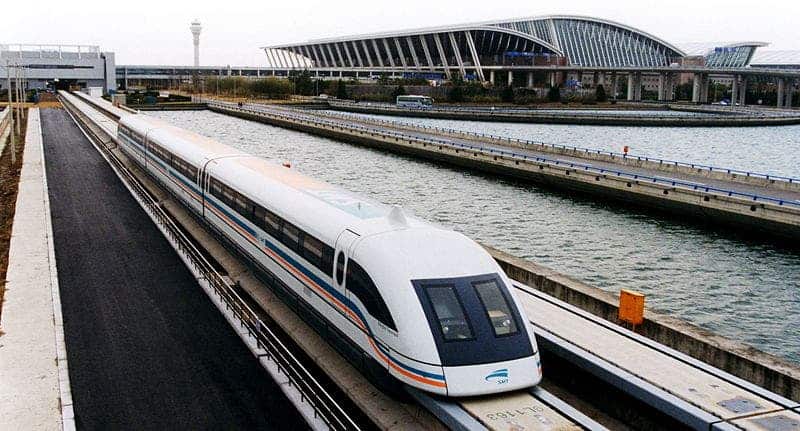China is taking the lead in the race to develop the fastest bullet trains in the world. Starting with 2020, the nation will open an experimental track that will allow maglev trains to cruise with a phenomenal speed of up to 1,000 km/h (621 mph). This means that a 2,200-km trip from Wuhan to Guangzhou, two of the busiest affluent cities in China, could be completed in just around two hours.

In 2002, Germany introduced maglev trains to China for the first time by opening a 30-km trial track that allowed passengers to travel from downtown Shanghai and the city’s airport at a speed of 430km/h. Since then, China has opened more than 30,000 km of high-speed rail, making it the largest such network in the world.
Instead of using wheels on a track, maglev trains float above the track on a so-called magnetic cushion. Essentially, the train is able to float above the surface thanks to the interaction between two sets of electromagnets that repel each other. There’s no friction, so maglev transportation can be very efficient and low maintenance.
The world record for the fastest Maglev train in the world was set by Japan Railway, which achieved a speed of 603km/h (374 mph) on an experimental track.
By contrast, the fastest train in the United States, Amtrak’s Acela Express, can only travel at a top speed of 241 km/h (150 mph), though it usually plods along at half that speed.
Speedy levitation
Blink and you might miss a commercial maglev trail in operation today. But China wants to push the envelope even further. According to Changjiang Daily, the official communications office for Wuhan province, a set of experimental tracks will be laid out early next year in the province that will pave the way for the world’s fastest floating trains.
The 200-km section will test whether a new Maglev technology can work as predicted. The track will essentially be made of vacuum tubes inside which electromagnets are cooled until they achieve superconductivity — meaning electrical resistance vanishes and magnetic flux fields are expelled from the material. The concept is highly similar to the Hyperloop, first proposed by Elon Musk, which is currently being developed concurrently by several independent companies and nations around the world.
High-temperature superconducting maglev theory suggests that floating trains could whizz past at nearly 1,000 km/h (621 mph). The first trial is expected to commence in 2020.
If the track in Hubei, Wuhan province, is deemed successful, work will soon begin on a long-distance track between Hubei and Guangzhou.
There are dozens of daily flights between the two sprawling Chinese cities but if the trip can be made in two hours by train, many business people will make the switch. This would not only save time but also help curb carbon emissions since planes typically generate ten times more emissions per passangers than trains.



